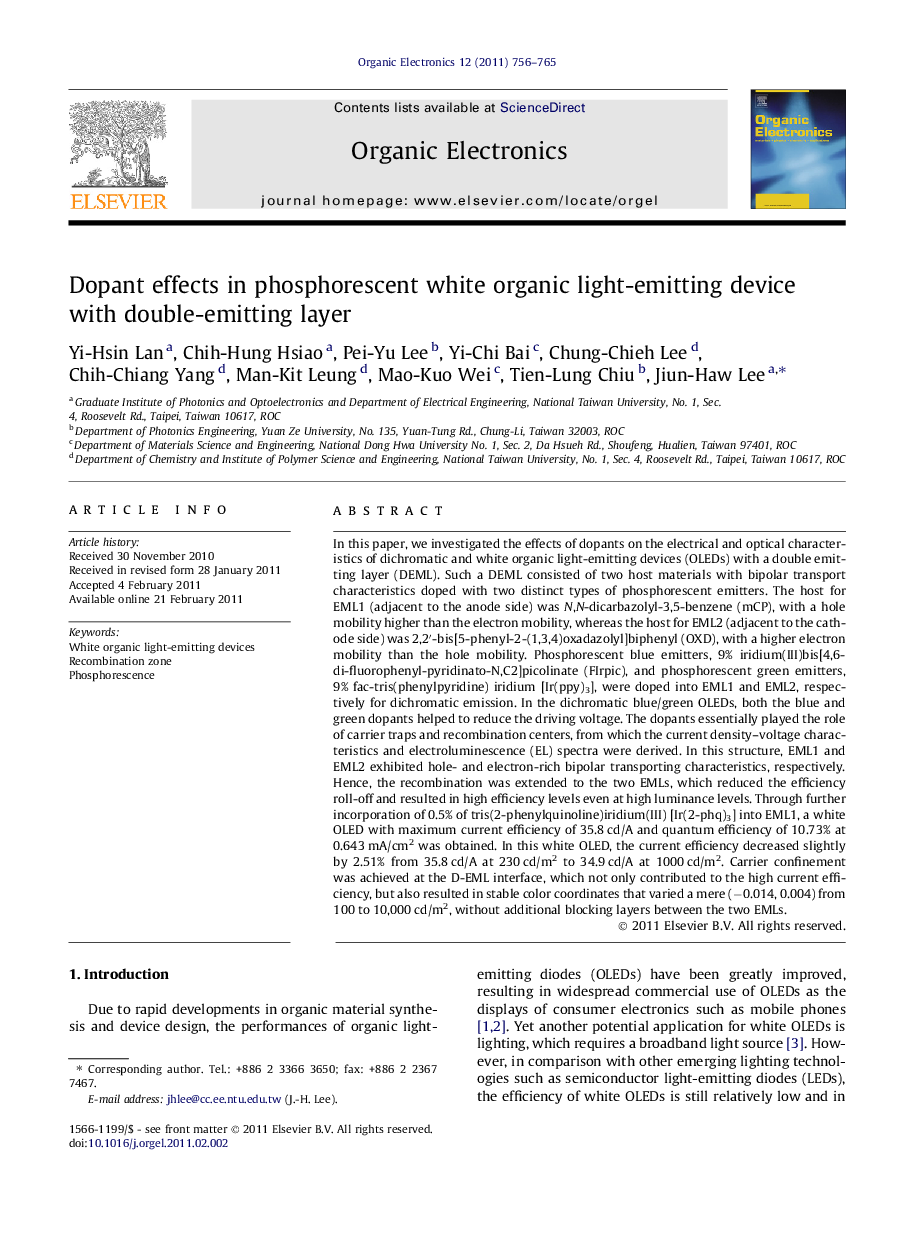| Article ID | Journal | Published Year | Pages | File Type |
|---|---|---|---|---|
| 1265351 | Organic Electronics | 2011 | 10 Pages |
In this paper, we investigated the effects of dopants on the electrical and optical characteristics of dichromatic and white organic light-emitting devices (OLEDs) with a double emitting layer (DEML). Such a DEML consisted of two host materials with bipolar transport characteristics doped with two distinct types of phosphorescent emitters. The host for EML1 (adjacent to the anode side) was N,N-dicarbazolyl-3,5-benzene (mCP), with a hole mobility higher than the electron mobility, whereas the host for EML2 (adjacent to the cathode side) was 2,2′-bis[5-phenyl-2-(1,3,4)oxadazolyl]biphenyl (OXD), with a higher electron mobility than the hole mobility. Phosphorescent blue emitters, 9% iridium(III)bis[4,6-di-fluorophenyl-pyridinato-N,C2]picolinate (FIrpic), and phosphorescent green emitters, 9% fac-tris(phenylpyridine) iridium [Ir(ppy)3], were doped into EML1 and EML2, respectively for dichromatic emission. In the dichromatic blue/green OLEDs, both the blue and green dopants helped to reduce the driving voltage. The dopants essentially played the role of carrier traps and recombination centers, from which the current density–voltage characteristics and electroluminescence (EL) spectra were derived. In this structure, EML1 and EML2 exhibited hole- and electron-rich bipolar transporting characteristics, respectively. Hence, the recombination was extended to the two EMLs, which reduced the efficiency roll-off and resulted in high efficiency levels even at high luminance levels. Through further incorporation of 0.5% of tris(2-phenylquinoline)iridium(III) [Ir(2-phq)3] into EML1, a white OLED with maximum current efficiency of 35.8 cd/A and quantum efficiency of 10.73% at 0.643 mA/cm2 was obtained. In this white OLED, the current efficiency decreased slightly by 2.51% from 35.8 cd/A at 230 cd/m2 to 34.9 cd/A at 1000 cd/m2. Carrier confinement was achieved at the D-EML interface, which not only contributed to the high current efficiency, but also resulted in stable color coordinates that varied a mere (−0.014, 0.004) from 100 to 10,000 cd/m2, without additional blocking layers between the two EMLs.
Graphical abstractFigure optionsDownload full-size imageDownload as PowerPoint slideResearch highlights► Double emitting layer (DEML) was formed by mCP/OXD. ► Dopants helped to reduce driving voltage. ► Color stability was achieved by carrier confinement of DEML structure.
